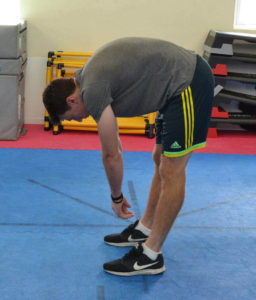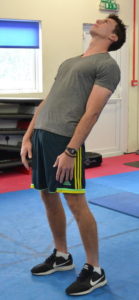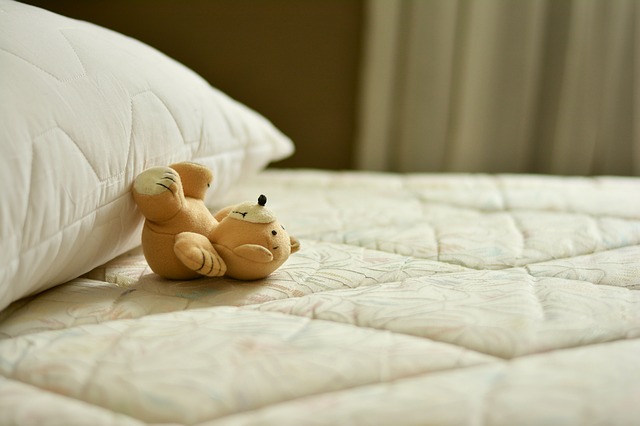Choosing the best mattress for lower back and leg pain can be a real minefield. Luckily, we’ve got some great advice for you (and it goes far beyond saying “pick the comfiest”)!
Aims of this post:
- Discuss why choosing the best mattress for lower back and leg pain is so important
- Learn a handy way to test your mattress for YOUR lower back and leg pain situation
- Give you some ideas for what to do if you need to change mattress because of lower back and leg pain
Before we dive in, please be aware that we are part of the Amazon Affiliate programme. This page may contain Amazon affiliate links, so if you choose to purchase a product for your sciatica that we recommend through a link on this page, we will receive a small commission at no extra cost to you. This helps us keep Overcome Sciatica alive! Thank you for your support. Please be assured that we only ever recommend products that we truly believe can help.
The right mattress for lower back and leg pain can mean the difference between a good night and no sleep…
It is no secret that a good mattress can make a big difference to recovery from lower back and leg pain.
It is fact that having a dodgy mattress certainly won’t facilitate a good night’s sleep. This becomes even more important when trying to recover from lower back and leg pain.
The standard advice that I used to give my patients is “choose the mattress that feels the comfiest because everyone is different”.
However, I’ve recently changed my tune.
How are you supposed to accurately assess what feels good and what doesn’t by spending just 10 minutes in a mattress shop?
Quite simply, you can’t.
Better advice for choosing the best mattress for lower back and leg pain
Therefore, there is a real need for better advice for anyone questioning how to choose the best mattress for lower back and leg pain.
Luckily, I stumbled upon a great piece by Dr Kelly Starrett, a performance coach who has trained hundreds of Olympians and other elite athletes.
He was talking on the importance of proper “sleep hygiene” for everyone, not just high-level performers. This is basically a term to describe how optimised your environment is for sleep, including your pre-bed rituals.
I have previously written about how strongly I agree that sleep needs to be a priority in people suffering from lower back and leg pain – which is often a catch 22 as sleep can be harder to come by when you’re suffering.
However, this advice I feel will be useful to a lot of individuals.
How do we know if we need to change mattresses for lower back and leg pain?
Dr Starrett says that we should be aiming for a night’s sleep where we don’t feel the need to “loosen up” for 30 minutes after we wake up.
Now, I know this sounds unrealistic to those with lower back and leg pain, but he feels that if you feel incredibly stiff for over 30 minutes after you wake up, your mattress is probably not helping.
The other signs are there for your eyes to see, too. If your mattress has hard lumps or broken springs, it might be time for a change.
Finally, try the 5-minute bed test:
Lay on your back on your bed for 5 minutes in a comfortable, relaxed position. If you feel the need to cross your legs during this 5-minute period, your bed is too hard.
So how do you choose the best mattress for lower back and leg pain?
To choose the best mattress for lower back and leg pain, we first need to take notice of one thing.
This is the acid test to find out which movement causes us MORE pain in our back and legs:
Is it flexing forwards (depicted in image A)? Or is it leaning back into “extension” (depicted in image B)?


So, did the movement in image A or image B cause you more pain?
If flexing forwards (image A) was more painful
If leaning forwards was more painful for your back and legs, you are being aggravated by a movement called “flexion”.
Mattresses that are soft will put the back naturally into a “flexion” position.
This means that, if you dislike the movement in position A and you have a soft mattress, you are being forced into a position that doesn’t currently agree with you for around 8 hours each night.
If this is the case, it is no wonder your back and legs are stiff and sore in the mornings!
What should I do?
In this case, I would recommend trialing a firmer mattress.
Before you go out and buy, I would suggest finding someone who already owns a firmer mattress in their spare room and asking to sleep a night there.
Alternatively, you could try placing a ply-wood board UNDER the mattress, to take away the sag of the bed slats.
If this is successful, why not opt for a firm mattress that comes with a “100 nights satisfaction guarantee”, meaning that you can return it at any time during the 100 days if you aren’t happy?
If leaning backwards (image B) was more painful
If leaning backwards was more painful, this means that “extension” is the movement which aggravates your pain more.
You are also more likely to disagree with extension at night time if you spend a lot of your day sitting.
Firm mattresses cause the lower back to be pushed into an extension position.
If you dislike extension, it is likely that you need a softer mattress to allow yourself to sink into a “flexed” position while you sleep.
What should I do?
If this is the case, you don’t necessarily have to change your mattress.
Why not get your hands on a foam mattress topper which will make your bed much softer for a fraction of the price?
Note: Dr Starrett recommends that you DO NOT get a memory foam mattress topper – as it is likely to lock your spine into an extended position as you sleep.
What if both movements were equally as painful?
Chances are you need something with a medium-firmness.
This is also likely the case if you tend to sleep on your side, as having a mattress that is too firm can put you into a side flexed position.
Again, trying before you purchase is critical in this instance too.
To read more free expert information from Overcome Sciatica click HERE!
What Else Can I Do to Improve Sleep with Lower Back & Leg Pain?
This is a great question and one answer is to AVOID the WRONG things that many people unknowingly do at night which make their sleep worse. You can find answers for what “sleep mistakes” to avoid in the video I recently released below:
Conclusion
Personally, I found this advice very interesting and it certainly makes a change from telling people to “just choose a comfortable bed”. The old advice is so impersonal and vague. When choosing the best mattress for lower back and leg pain, thankfully we have the advice from the article above to help guide our initial decision.
Why not try the tests above and make changes to see if this improves your sleep, too?
Remember, cost does not necessarily dictate how well you will respond to a mattress and the absolute key is finding one that carries a satisfaction guarantee, meaning you can return it if it doesn’t help.
Are You Looking for RAPID Relief from Sciatica?
My good friend, colleague and fellow international sciatica expert, Dean Volk, has a brand new sciatica relief video course available – and I’m delighted to be an official sponsor!
Check out Dean Volk’s “Kicking Sciatica OUT of the Butt!” Online Pain Relief Course Here!
I can proudly recommend Dean and his course for sciatica sufferers – because I’ve seen his incredible results first-hand. You can check out his course (and get lifetime access to the videos and bonus content) by clicking HERE.
The information on Overcome Sciatica should never be used as a substitute for medical advice from a doctor. Never put into action any tips or techniques from Overcome Sciatica without checking with your doctor first. Please see full terms of use here.




